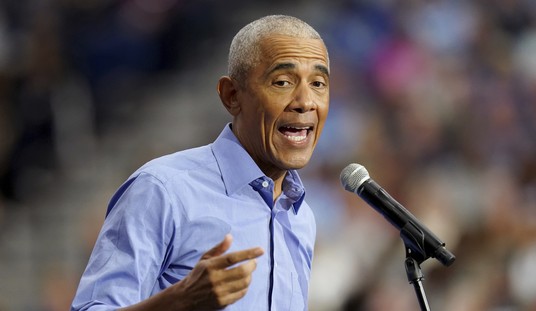There is considerable friction, if not outright hostility, between Alberta and Quebec, flowing mainly from the prairie province to the perpetual Gallic parvenu. They are two resource-producing economies: electric power in Quebec and hydrocarbon energy in Alberta. The difference is that Quebec profits freely from sales to the Northeast American market, whereas Alberta is hamstrung by pro-Green legislation emanating from Ottawa against gas and oil extraction and delivery.
A second difference is that Quebec, falsely designated a “have-not” province, profits to the tune of $13.6 billion annually from equalization transfers disbursed by the Federal government from provincial coffers. Quebec’s fiscal capacity is claimed to be lower than average, an assessment that seems drastically excessive. Of course, Alberta, a “have” jurisdiction, pays almost the total amount while receiving far less in return from the central government. “Alberta continues to pay the freight for confederation through equalization and in return Liberal politicians score votes in Eastern Canada by talking down the only part of the country that really still works,” writes the Western Standard. This is a major cause, one of many, increasingly agitating secessionist fervor in Wild Rose Country.
As the Fraser Institute reports, “from 2007 to 2022 (the latest period of available data), Albertans contributed $244.6 billion more in taxes and other payments to the federal government than they received in federal spending—more than five times as much as British Columbians or Ontarians.” Why a wealthy, if under-accounted, province like Quebec should benefit from a parasitic relationship with Alberta may seem unclear—except that the Federal government spuriously entitles a cranky and fractious Quebec for the unadmitted but obvious purpose of keeping it in Canada.
There are other reasons, too, for Alberta’s discontent with its position in the country’s economic and power-sharing ecosystem. The Standard points out that “The ‘no pipeline bill,’ the West coast tanker ban, emissions caps, the puck-ragging approval process that led to major companies abandoning projects and a nation-wide loss of as much as $670 billion in investment” is Ottawa’s response to Alberta’s legitimate claims for just treatment. Alberta has every reason to contemplate departure from a venal and casuistical Confederation in which the ruling Eastern or Laurentian elite works to impoverish a Canadian powerhouse while favoring one province outrageously at the expense of another. There is surely no reason whatsoever for Alberta to continue supporting Quebec.
Irrespective of the unbalanced relationship, however, Alberta has occasion to be grateful to Quebec. There are substantial political ligaments binding the two provinces. La belle province has already engaged in two referendums on secession in 1980 and 1995 and is planning a third in 2030. Alberta, for its part, is in the midst of preparing a referendum question on separation and has lowered the threshold of signatures necessary to validate the procedure. The yellow brick road to the terminal of a sovereign Oz has already been laid down by Quebec, a road that Alberta may now access with the advantage of precedent.
History also shows Quebec’s pioneering path, especially with regard to provincial authority over its own cadastral perquisites. At the time Confederation was being debated, future prime minister John A. Macdonald clearly preferred a British-style legislative union in which power rested in a central government. Authority would move downward by increments from the Crown to the central government and thence to the local governments in the provinces, which latter Macdonald felt would eventually be assimilated by the central power.
“If the Confederation goes on,” he wrote, “you will see both Local Parliaments and governments absorbed by the General Power.” It would happen by controlled gradations, but to his mind it was inevitable. In creating the Dominion of Canada, the British North America Act of 1867 would create something close to a monolithic system in which provincial governments would be subordinate to a strong, national government and gradually lose even their partial independence.
Macdonald and other likeminded colleagues pointed to the American federal system with its division of powers between two levels of government, the Union and the states, that had reduced the nation to shreds and dissolved it into a bloody civil war. “A sad spectacle,” said Macdonald confrère George-Étienne Cartier, “of a country torn by civil war, and brethren fighting against brethren.” A strong legislative union would prevent such a catastrophe from occurring, or so Macdonald thought. The Red River Rebellion in its 1885 iteration would prove him wrong. War waits for no man—or system.
In any event, a British-style supervening authority was not to be. Quebec had other ideas. The French majority in Lower Canada, which was officially to become Quebec at Confederation, refused to accept a union that did not offer them the right to protect and maintain their own distinctive identity as regards language, faith, tradition, and the civil law code — the Napoleonic code is distinctly different from British Common Law. Quebec insisted that the Quebec Act of 1774, which allowed Quebec to retain its civil law system based on French law and to defend its Roman Catholic faith, would continue as part of the new country. In the end, provincial rights were effectively established as part of the BNA Act, aka the Constitution Act of 1867, though Quebec was, until recently, the sole beneficiary.
The ironic fact is that Quebec’s insistence on preserving the basic elements of its sovereignty as an antidote to a unitary, indissoluble, interventionist, central state is precisely what gives Alberta the historic privilege of establishing its own energy programs and policy directives, at last rejecting with newfound confidence those Federal initiatives that have thus far frustrated both its prosperity and its unique autonomy. Alberta Premier Danielle Smith introduced the Alberta Sovereignty Act in response to recurring intrusions on the province’s core jurisdictions, placing the Act in the context of the Prairie provinces’ long struggle for due constitutional recognition and the political equality of their citizens.
During the 1870s and 1880s, four of Canada’s provinces, Ontario, Nova Scotia, New Brunswick, and Manitoba, were vigorously asserting their desire to set forth in their own direction. These provinces, writes Michael Bliss in “Right Honourable Men,” “used legislation, threats of secession, court challenges, and interprovincial alliances to push against the national straitjacket.” But none succeeded in carrying through what turned out to be little more than a series of clamorous bluffs, despite the provinces’ vocal commitment to the doctrine of provincial autonomy, which Macdonald and subsequent prime ministers always managed to defeat. That may soon change.
Today, in a country whose prime minister, Mark Carney, a man of limited political talents, has no image and credibility despite what the Ruritanian polls and media will say, the prospect of making it to the finish line for either Alberta or Quebec is at least feasible, possibly inevitable. Carney will be unable to hold the country together, for he possesses neither vision nor pragmatism, busy coquetting with the irrelevance of progressivist, ESG ideology while promoting his own investments. He has only the Canadian electorate, the sector that stretches primarily from Manitoba to Newfoundland minus Quebec, whose ignorance and apathy he can rely on to abet his disastrous stewardship as the country slips away from him. Ballooning deficits and inflationary pressures are visibly bringing the country down.
Indeed, one might consider this declivity as another, unintended form of Canada’s new and booming industry known as MAiD (Medical Assistance in Dying), which one doctor describes as “transitioning and delivering life out.” Under Carney and a corrupt Liberal Party, a sickly Canada is busy transitioning and being delivered out of its national lifespan, and some provincial premiers are happy to help it along. The politics of national dismemberment, the wrenching self-immolation of the country, is now a distinct likelihood, if not next year, certainly by 2030.
Alberta and Quebec are on the same road, though for manifestly different reasons. But it remains the same road, and a road which Quebec charted through the wilderness of foundational politics on which Alberta has now arranged its caravans to a possible and beckoning future.










Join the conversation as a VIP Member